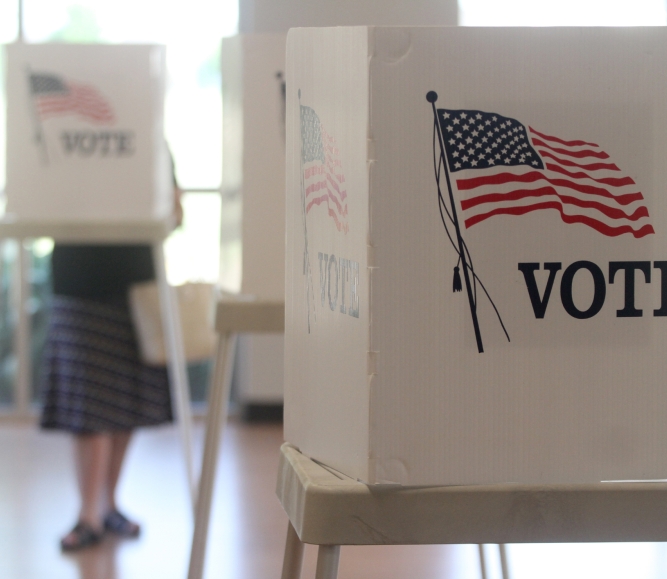Counties Matter: Stronger Counties. Stronger America.

Upcoming Events
Related News
Counties Matter. Counties are diverse in structure and how we deliver services to our residents, yet we all share the vision of achieving health, safe and vibrant counties across America.
America’s 3,069 counties, parishes and boroughs represent the places where we live, work and play.
Counties are so present in our everyday lives that we sometimes overlook the many ways we help our communities thrive. Often behind the scenes, 40,000 county elected officials and 3.6 million county employees are indispensable partners in our nation's intergovernmental system, which balances and shares roles and responsibilities among all levels of government. Counties collaborate with federal, state, local and tribal governments to deliver on-to-ground services and meet our residents' needs.
Counties are responsible for maintaining roads and bridges, caring for our physical and mental health, administering elections, ensuring public safety, strengthening environmental stewardship, and so much more
Jump to Section
Key Stats
38.9K
Elected Officials
38,873 total county elected officials (including county board, executives and row officers)
19.6K
Elected board members and executives
19,579 elected county board members and elected executives
18.6K
Row Officers
18,629 independently elected constitutional or row officers responsible for specific county functions

America's Diverse Counties
Counties are one of America’s oldest forms of government, dating back to 1634 when the first county governments (shires) were established in Virginia.
The organization and structure of today’s 3,069 county governments are chartered under state constitutions or laws and are tailored to fit the needs and characteristics of states and local areas.
No Two Counties Are the Same
No two counties are exactly the same. Counties are diverse in structure and how we deliver services to our communities. In general, states decide the roles and responsibilities of county governments. Counties are governed by locally elected officials and, in some instances, operate under home rule authority, which allows for more local flexibility and control with structural, functional and fiscal powers. Though organizational structures vary, all county governments are on the front lines of delivering vital services to residents and building stronger communities.
Key Stats
319M
County Residents
3.6M
County Employees
Equaling roughly 1 in 50 working Americans

Transportation & Infrastructure
Transportation and infrastructure are core public sector responsibilities that impact everything from our daily commutes to shipping goods around the globe.
From building and maintaining roads and bridges to providing efficient transit options, counties are a driving force connecting communities and strengthening our economy. Counties play a major role in other essential community infrastructure like hospitals, jails, courthouses, parks, schools and water purification and sewage systems.
Services Include
- Roads and bridges
- Airports
- Public transportation
- Construction of public facilities
- Utilities like gas and electrctricity
- Solid waste management and recycling
- Water, sewage & storm water
- Emergency telecommunications
Key Stats
45%
of America's road miles
Counties own and maintain 45% of America's roads.
34%
of public airports
Counties are involved in the operation of 34% of public airports.
38%
of bridges
Counties own 38% of bridges, a total of 229,386
Bridging the Digital Divide
Investing in Broadband
Counties invest in local broadband networks.

Counties Invest Annually
$61B
in the construction of public facilities
Counties invest $61 billion in the construction of public facilities, such as hospitals, schools, jails and other local institutions.
$134B
total in building
Counties invest $134 billion total in building, maintaining and operating physical infrastructure and public works.
$22B
in sewage and solid waste management
Counties invest $22 billion in sewage and solid waste management.

Community Health
Counties invest heavily in local residents’ health and well-being, often serving as a safety net for low-income and indigent residents.
County health departments protect our residents and communities by offering a wide range of services like administering flu shots, providing health information, and preventing and responding to public health emergencies.
From hospitals and emergency rooms to clinical care facilities, many counties operate the systems that keep us healthy from the time we are born to the time we grow old. Counties also often have significant responsibilities for behavioral and mental health services and care.
Services Include
- Hospitals and health clinics
- Public health
- Behavioral and mental health
- Substance abuse treatment
- Immunization
- Indigent healthcare
- Health code inspections
- Nursing homes and long-term care facilities
Key Stats
900+
public hospitals
Counties support 900+ public hospitals with more than 62,00 beds
1,592
local health departments
Counties are involved in promoting public health through 1,592 local health departments
$28 B
non-federal share of Medicaid
Local governments, mostly counties, contribute $28 billion to the non-federal share of Medicaid
Community Health
Providing Healthcare for Residents
In a majority of states (26), counties are required to provide healthcare for low-income, uninsured or underinsured residents.

Counties Invest Annually
$62.8B
in human services
Counties invest $62.8 billion in human services
$100B+
in health and hospitals
Counties invest $100+ billion in community health and hospitals
$163B+
in community health, hospitals and human services
Counties invest $163+ billion in community health, hospitals and human services

Justice & Public Safety
Counties play a major role in two distinct areas of justice and public safety: emergency response and preparedness and the criminal justice system.
From patrolling the streets, to operating and maintaining county detention and court facilities, to employing innovative approaches to safely reduce jail populations, county sheriffs and other law enforcement departments are on the front lines of justice and public safety. Other key county players are judges, district attorneys, public defenders, court clerks, jail directors, 911 operators, coroners and medical examiners.
Services Include
- County courts
- Public defenders
- Sheriff departments
- County police departments
- Paid and volunteer firefighters
- District attorneys
- Jails and correctional facilities
- Juvenile detention and justice services
- Coroners and medical examiners
- Emergency management personnel
Justice & Public Safety
Local Jails & Correctional Facilities
Counties operate 91% of all local jails.
Eight million people were admitted to county and other local jails in 2020.

Counties Invest Annually
$107B
in justice and public safety
Counties invest almost $107 billion in justice and public safety services.
$13.3B
in fire protection
Counties invest almost $13.3 billion in fire protection activities
$42B
in police and sheriff departments
Counties invest over $42 billion on 2,961 police and sheriff departments
$21B
on county courts and legal services
Counties invest almost $21 billion on county courts and legal services

Veterans
Counties are home to more than 17 million veterans, comprising seven percent of residents living in our counties.
Counties fund and operate, almost exclusively through local tax revenues, County Veterans Service Officers (CVSOs) in 29 states and the District of Columbia, which help veterans claim more than $52 billion in federal VA benefits each year. CVSOs help our veterans access stable housing, employment and education opportunities, and deliver critical mental health services that treat trauma and prevent suicide.
Veterans
Counties Supporting Veterans
Counties administer more than $209 billion in VA funding distributed to support veterans and their families.

County Veteran Service Officers (CVSOs)
County veterans services officers operate in 29 states and the District of Columbia are responsible for helping veterans access federal benefits that ease the transition into civilian life and ensure access to essential services.
Key Stats
48%
of veteran expenditures went to veteran compensation and benefits
40%
of veteran expenditures when to veteran medical care
7%
of county residents are veterans

Public Lands Management and Resilience
Counties offer a local, detailed level of expertise on resource management issues to federal land agencies.
Whether participating in forest health projects to reduce wildfire, providing emergency services on federal lands, maintaining roads and other access points or implementing wildlife conservation measures, counties are a key partner in ensuring federal lands and resources are enjoyed and used wisely.
Counties and Federal Public Lands
Sixty-two percent of America's counties have federal public lands. Counties received more than $515 million in Payments in Lieu of Taxes funding in FY2021
1,700
counties received PILT funding
More than 1700 counties received funding in 2021.
$2.78
per entitlement acre
Nationally, the media PILT amount per entitlement acre was $2.78.
$272,526
average payment
The average payment to counties receiving PILT was $272,526.
Secure Rural Schools (SRS) Stats
Counties also received more than $249 million in Secure Rural Schools (SRS) funding in FY2019. PILT and SRS enable counties to provide services by offsetting losses in tax revenues due to federal land in their jurisdictions.
$249M
in SRS funding
Counties received more than $249 million in SRS funding in FY2018
655
Counties and schools receiving SRS payments

County Management
Counties provide vital services to all Americans, from issuing birth certificates and marriage licenses to administering elections. Counties often build and maintain parks, libraries and cultural centers.
Counties are sources of innovation, exploring new opportunities to address challenges and piloting programs and initiatives that make residents’ lives better. While balancing numerous administrative responsibilities, counties deliver essential services to ensure healthy, vibrant and safe communities across the United States.
Services Include
- Community and economic development
- Tax assessments and collections
- Record keeping
- 911 call centers
- Elections and polling places
- Recreation and parks
- Arts and culture programs
- Housing
- Libraries
Elections
The County Role in Elections
Every two years, counties fund and oversee nearly 100,000 polling places and coordinate more than 630,000 poll workers.
